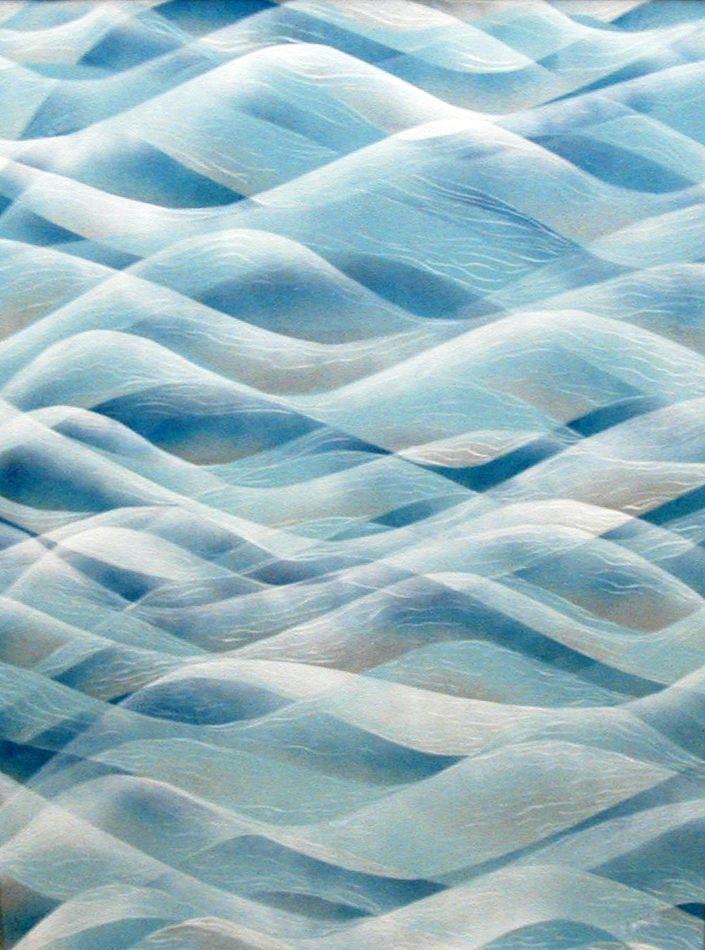Air

The image depicts a series of gentle, flowing waves, capturing the serene motion of water with shades of blue and white, creating an almost abstract interpretation of the ocean’s rhythmic patterns and textures.
Name/Title
AirEntry/Object ID
2004.1.3Description
Abstracted blue and silver waves intersecting and overlapping over each other.Type of Painting
PanelArtwork Details
Medium
oil with silver and gold foilCategory
Calvin Faculty Artist, Alumni Artist, On-Display at Calvin University, Plants and Nature
